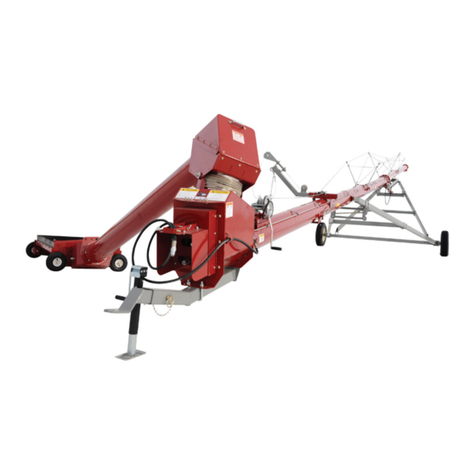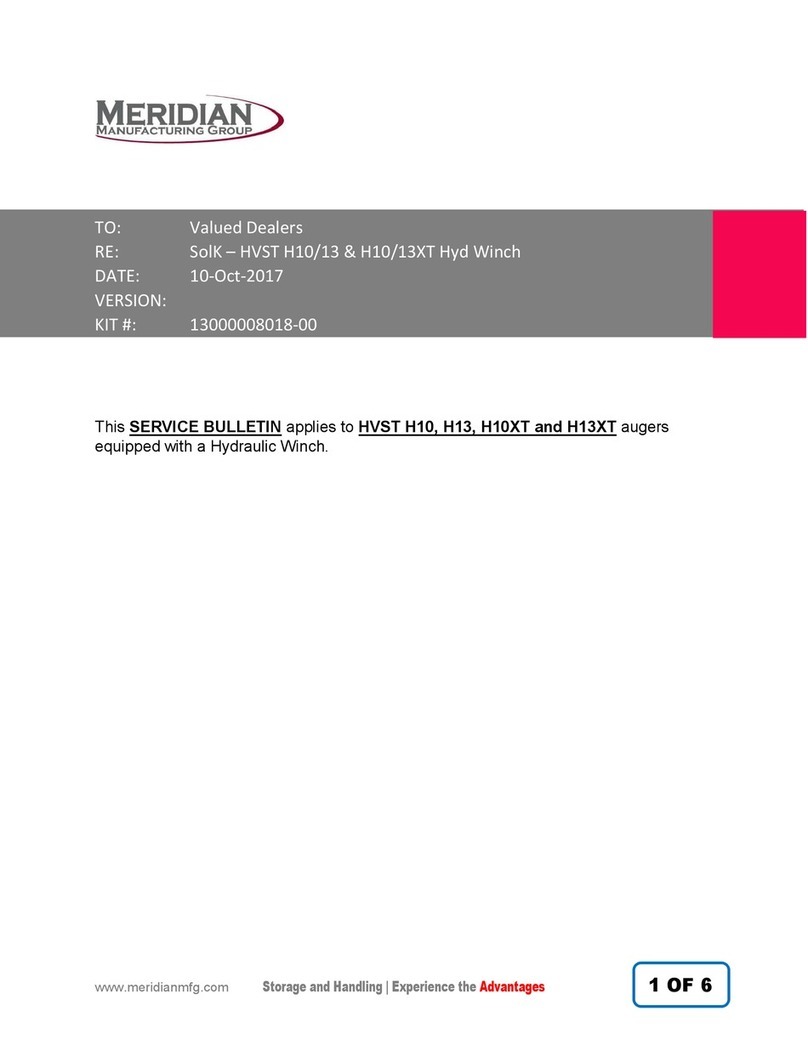
3.4 Final Placement of Auger _
When you are ready to use your auger, place the auger in its lowered
position, and slowly back it up to your bin or storage facility, keeping an
eye out for any people or obstructions in the hazard zone.
DANGER:
Avoid any electrical wires and overhead obstructions. Electrocution
can occur without direct contact. Failure to listen to this warning
can result in personal injury or death.
Use tractor hydraulics to raise the auger into position.
Slowly back the auger into position until the spout is over the opening of
the bin or storage facility and use tractor hydraulics to slowly lower the
spout into the opening.
On T-Series augers, the winch should make a clicking sound when raising
the auger. If you do not hear the clicking sound, retain hold on the winch
handles, lower the auger, and repair the winch.
As soon as the auger is in position, the wheels of the auger must be
chocked on both sides. To prevent tipping, anchor or support the auger
during operation.
On T-series augers, the PTO driveline is a non-separable type. Remove
the PTO from the tractor and secure it in the transport mode before
moving tractor away from auger.
3.5 Lowering the Auger _
Attach auger to tractor, making sure that your hydraulics are also
attached to the tractor. Raise the auger, to ensure that the outlet end is
above the bin or storage facility. Remove wheel chocks and ensure area is
clear of personnel and obstructions.
Drive forward, pulling auger slowly away from the bin or storage facility.
Be sure that the wheels are free to move, and lower the auger. Make sure
auger is in full down position before proceeding.
10







































